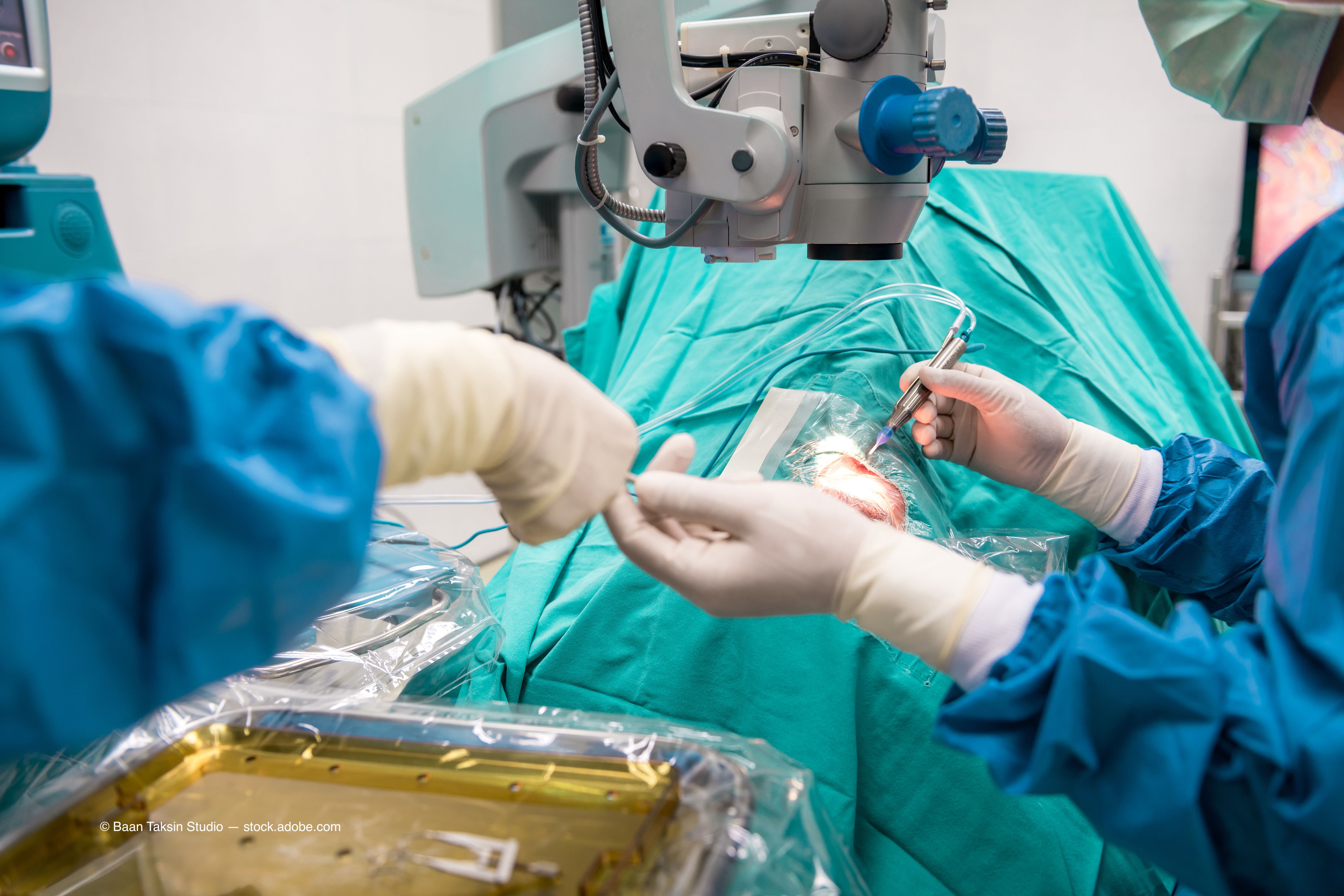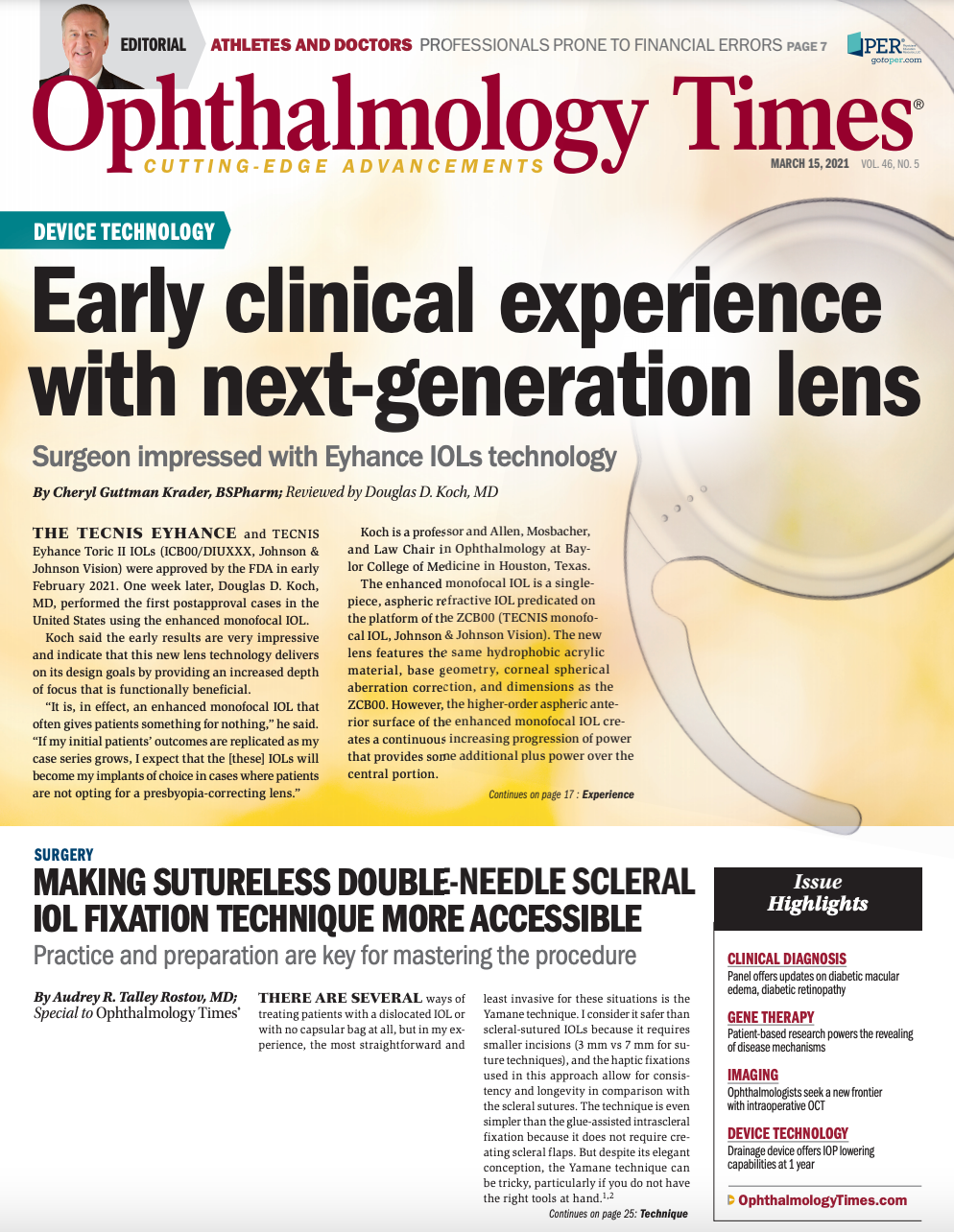Publication
Article
Digital Edition
Study examines pairing phacoemulsification, implantation of microbypass stents
Author(s):
Investigators find treatment is an option for treating open-angle glaucoma.

This article was reviewed by Antonio M. Fea, MD
Findings of a cost-utility analysis confirm that from the perspective of the Italian national health system, a dual procedure combining phacoemulsification with implantation of two trabecular microbypass stents (iStent inject, Glaukos) is a cost-effective option for the treatment of mild to moderate open-angle glaucoma, compared with cataract surgery alone, according to Antonio M. Fea, MD.
Related: A menu of glaucoma treatments includes options to fit all scenarios
“Many patients with glaucoma develop cataracts and the iStent inject has been shown to lower IOP and reduce the usage of ocular hypotensive medications in randomized studies comparing concurrent iStent inject and cataract surgery with cataract surgery alone,” said Fea, who is a professor in the Department of Surgical Sciences and the head of the Glaucoma Unit at the University of Turin in Italy. “Our study demonstrates the cost-effectiveness of the combined surgery vs cataract surgery alone in a base case model with confirmation of its robustness through sensitivity analyses.”
The analysis simulated outcomes and costs over a lifetime horizon using a Markov chain.
The model is built on mild, moderate, advanced, and severe open-angle glaucoma being 4 mutually exclusive states through which patients can progress irreversibly at 1-month cycles.
Related: Exploring the evolution of interventional glaucoma
“When patients experience disease progression despite active treatment, they are assumed to undergo subsequent treatment, which in this case is trabeculectomy,” Fea explained.
The model was populated with efficacy data extracted from the iStent inject clinical trials and published literature.
Quality adjusted life years (QALYs) were estimated as the sum of life years spent in each health state weighted by the associated utilities. The utilities associated with the different health states were extracted from studies published in the peer-reviewed literature.
“Because of differences in costs throughout Italy, we decided to consider only direct health care costs, including the costs of the primary and subsequent procedures, medications, disease monitoring, and adverse events,” Fea pointed out.
Related: MIGS, other options offer hope for angle-closure patients
The base case results showed that as measured by QALY survival, the combined glaucoma-cataract surgery procedure was more effective than cataract surgery alone (11.38 QALYs vs 11.28 QALYs, respectively).
Although the use of the iStent inject led to a slight increase in total costs, the combined surgery was cost-effective compared with cataract surgery alone, with an incremental cost-effectiveness ratio (ICER), which represents the ratio of the difference in cost and the difference in QALYs, of €12,717 per QALY gained.
Additional analyses conducted to assess the robustness and reliability of the base case results included one-way deterministic and probabilistic sensitivity analyses.
The one-way deterministic sensitivity analysis showed the ICER variability was modest, ranging from approximately €8700 to €24,000 per QALYs gained.
Related: Optimizing and modifying newer glaucoma surgeries
The probability sensitivity analyses showed the probability of the combined surgery being cost-effective was about 98% at a willingness to pay threshold of €50,000 per QALY and was still 91% at the commonly accepted willingness to pay threshold of €30,000 per QALY, Fea noted.
--
Antonio M. Fea, MD
e:antoniomfea@gmail.com
This article is based on a paper presented by Fea at the ESCRS 2020 virtual meeting. Fea is a consultant to EyeD, Glaukos, iSTAR Medical, Ivantis, and ELT Sight and receives research support from Allergan.

Newsletter
Don’t miss out—get Ophthalmology Times updates on the latest clinical advancements and expert interviews, straight to your inbox.




